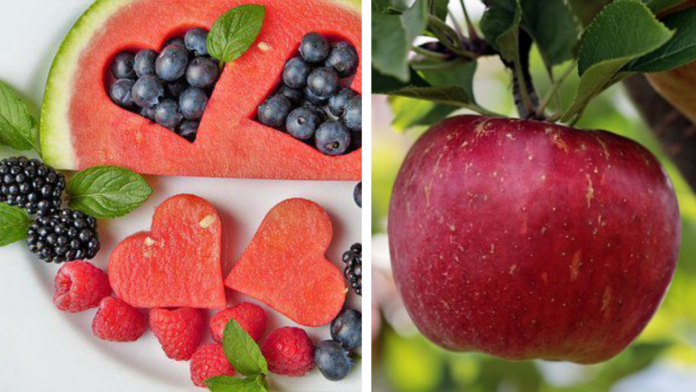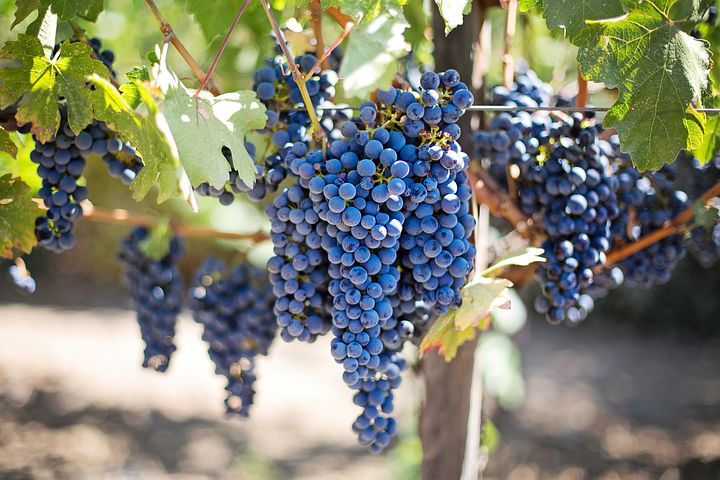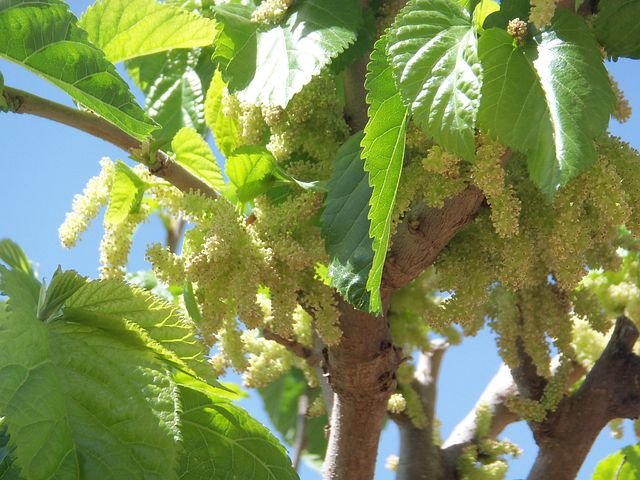Wouldn’t it be wonderful to be able to pick a delicious, fresh peach or a few strawberries from your own backyard? Even if you are a novice or have a little garden, you may produce a variety of fruits there. But before you start planting, consider which fruits will thrive in your environment, which ones will work well together, and how to arrange them in your garden. Depending on where you live, the type you’re cultivating, and whether you’re planting bare-root plants or specimens that have been grown in containers, you may choose the optimal month to plant your fruit garden. If given the right amount of sunshine, soil, and air circulation, fruit trees and bushes may thrive for a very long time.
The top nine fruit varieties to plant in your personal orchard, often known as your own fruit kingdom.
Blueberries

Berries are a simple way to get started with fruit cultivation. A lovely three-season shrub, blueberries have lovely white spring blooms, fruit in the summer and stunning red fall leaves. Although the soil needs to be sufficiently acidic in order to grow blueberries, the shrubs should live and bear fruit for many years. You’ll need two types for effective pollination if you want a big crop.
Blueberries are best planted in the spring or autumn, so October is a fantastic month to start a garden with them. Waiting until the autumn may allow you to take advantage of excellent end-of-season discounts on bushes, potentially as early as September. Grow highbush blueberries, such as the ‘Blue crop’ variety, in regions with harsh winters.
Southern highbush or rabbit eye types are the best choices for gardeners in warm regions. Additionally, blueberries can be grown in containers. Just remember to drape netting over your plants once the fruit is ready to keep birds away.
- USDA growing zones range from 3 to 10, depending on the type.
- Sun Exposure: Part shade and full sun
- Rich, acidic, damp to moist, well-draining soil is required.
Strawberries

Strawberries that have just been picked are definitely worth the small work required to raise them. Three varieties are available: June bearing (excellent for freezing and canning), everbearing (produces two to three smaller harvests each season), and day-neutral (continuously sets modest amounts of strawberries throughout the season). Strawberry plants should be planted in the spring (April or May) in USDA Hardiness Zones 6 and lower for the best results. Plant them in the autumn (September or October) in zones 7 and above.
Strawberry plants like spreading by use of runners. However, keep the runners to a few plants at most, and prune the remaining plants for the best fruit production. Additionally, to stop a plant’s blossoms from fruiting in its first season, pinch them off. As a result, it will be able to focus its efforts on creating a strong root system, which will greatly improve its output the next season. Finally, every three to five years, you should anticipate to replace or revitalize your strawberry plant.
- USDA growing zones range from 4 to 9, depending on the cultivar.
- Sunlight: full sun
- Rich, somewhat acidic, medium-moisture, well-draining soil is required.
Raspberries and Blackberries

Always popular in backyards are raspberries and blackberries. Older types, however, might be rowdy, spreading out extensively, and coated with thorns, which made harvesting a difficult task. Much more well-behaved and thornless are newer cultivars. Additionally, if you plant a variety of crops at different times of the year, your harvest will last for weeks. The best time to start your berry patch is in the late spring if you’re transplanting container-grown plants. You may plant bare-root raspberries and blackberries whenever the soil is ready in the spring.
To maintain their productivity, the plants do need to be pruned annually, but it is a simple task. Pruning is done to thin the plants out so that all portions may receive light and air. Both development and illness prevention are aided by this.
- USDA growing zones range from 4 to 8, depending on the type.
- Sun Exposure: Part shade and full sun
- Rich, somewhat acidic, wet, well-draining soil is required.
- Blackberries can be dark purple to black, while raspberries can range from light to dark red.
Grapes

While it is not difficult to grow grapevines, you will have fierce competition from birds and other animals during the harvest. In addition, grapes require a trellis or other kind of support to grow on. There are various tips on how to prune them as well, however many individuals grow grapes pretty effectively even with a casual approach to trimming.
To find out which grape types are ideal for your region and whether spring is actually the best time to plant them as the soil is workable, contact your local extension office. If a variety is best for making wine or for eating, be sure to note that as well. To avoid disease, the majority of grape types require a sunny area with rich soil that has adequate drainage and air circulation.
- USDA growing zones range from 3 to 9, depending on the cultivar.
- Sunlight: full sun
- Rich, medium-moisture, well-draining soil is required.
- Numerous grape varieties come in white, green, purple, and blue hues.
Apples

Apples are a popular fruit that many gardeners wish to cultivate, but doing so successfully may be challenging due to apple trees’ susceptibility to various pest and disease issues. New cultivars need some spraying, covering, or other forms of protection even though they were bred to be resilient. Apple trees also require a significant amount of trimming. Focus your pruning efforts on thinning branches to allow more light and air to reach the entire tree. This encourages healthy development and aids in illness prevention.
In the North and South, early spring and autumn, respectively, are the best times to grow apple trees. For pollination, two distinct apple tree kinds are required. Choose trees with various types grafted onto one trunk or a compact columnar tree that may be planted in a container if you want to conserve space. Also, think about dwarf varieties if you have a small yard or need to take care of them more easily.
- USDA growing zones range from 4 to 9, depending on the cultivar.
- Sunlight: full sun
- Rich, medium-moisture, well-draining soil is required.
- Colour variations: There are several red and green fruit variants.
Cherries

One of the simplest fruit plants to cultivate and maintain is the cherry tree. They seldom ever need to be pruned, and pests and illnesses rarely affect them. Unless you grow a tree with two distinct types grafted on it, sweet cherry need two trees for cross-pollination and are planted in the spring. If you are cultivating sour baking cherries, you can get by with only one tree.
While your cherry tree is still dormant in the winter, prune it, and fertilise it in the early spring. Additionally, these trees don’t tolerate drought well. Therefore, during hot weather, make sure they receive enough watering or rainfall—at least weekly or more.
- USDA growing zones range from 5 to 8, depending on the type.
- Sunlight: full sun
- Rich, wet, well-draining soil is ideal.
Peaches

Regardless of size, peach trees often grow to be small enough to fit in most backyards. Additionally, you can smell the sweetness of the ripening peaches from a distance of several yards. You’ll also get to taste the freshest vegetables right from the tree rather of the stale and maybe damaged selections at the grocery store if you cultivate this thin-skinned fruit yourself.
When the tree is dormant, in the late winter or early spring, plant a peach tree you purchased from a nursery. To maintain the branches fruitful and at a manageable height, these trees do need to be pruned. Instead of enormous crops of little peaches, new trees that have been thinned yield fewer amounts of larger peaches. With three to five major branches that allow light and air to reach the centre, peach trees are often trimmed into an open V shape.
- USDA Growing Zones: 5 to 9, depending on the cultivar.
- Sunlight Intensity: Full
- Needs for soil: rich, loamy, medium wetness, well-draining.
Figs

Fig trees may be grown in the ground or in pots and are surprisingly simple to cultivate. They often don’t have insect problems and don’t need much trimming. There are a few new and hardier cultivars to take into consideration, but the majority of fig types are only consistently hardy down to USDA hardiness zone 7.
When a fig tree is dormant, which is in the early spring or late autumn, you should plant it. Keep the container modest if you decide to grow your fig tree in a container and bring it indoors for the winter. The size of the tree’s top will remain smaller as the roots become more restricted. Moving will be considerably simpler, and you will still have access to plenty of figs.
- USDA growing zones range from 6 to 9, depending on the type.
- Sun Exposure: Part shade and full sun
- Rich, wet, well-draining soil is ideal.
Melons

You may still produce delectable melons in your yard or in pots if you’re not ready to commit to a tree or bush. Melons require a lot of heat and sunlight. They also need a lot of room because they grow on vines that may quickly grow to 20 feet or more in length. Melons may be grown on trellises, but you’ll need to pick a type with tiny fruits. Large melons, like watermelons, have a tendency to get quite heavy and fall off the plant.
After the season’s threat of frost has passed, plant your melons in the spring. As they develop and become established, water them frequently. Once the fruits begin to appear, you can reduce your watering slightly.
- USDA Growing Zones: Zones 2 through 11 for yearly plant growth
- Sunlight: full sun
- Rich, loamy, wet, well-draining soil is ideal.
- Fruit can have flesh that is red, pink, orange, or yellow in colour.




